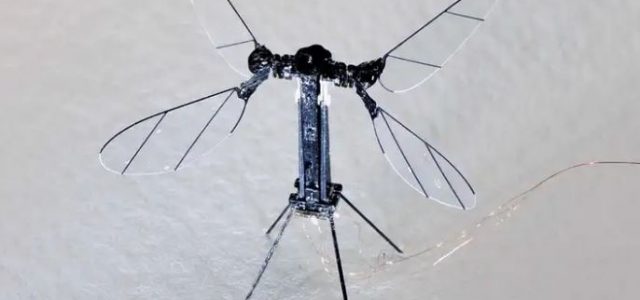For years, scientists have wanted to create flying robotic vehicles the size of insects. The tricky bit has been building something that can produce enough thrust while still being light enough to fly, without being tethered to an external power source. Now, a group of researchers have hit on a new design. At half the weight of a paper clip, RoboBee X-wing has achieved untethered flight using ultra-lightweight solar cells, powering piezoelectric actuators, via a stripped down circuit board. This technology is in its infancy, but could pave the way for a new generation of miniature drones. Researchers hope these insect-bots can maneuver around much more cramped spaces than conventional, larger drones, potentially helping with environmental and disaster monitoring.The flying robot was developed by Noah Jafferis and his colleagues at Harvard University.



















